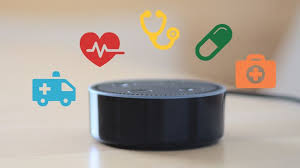The growing ecosystem of devices and products serving peoples’ health and well-being shows us that innovators already see the opportunity to serve the fast-growing market for self-care among people 50 years of age and up.
For nearly twenty years, one thing has felt inevitable: when boomers reach “old age,” senior living demand will surge. And yet ..
ChatGPT Health builds on consumer use of today's ChatGPT so responses are informed by your health information and context.
The prize honors .lumen’s Glasses for the Blind, an AI-based device that applies autonomous driving technology adapted for pedestrians. Using computer vision and local processing, the headset understands the three-dimensional environment in real time without relying on the internet or pre-defined maps and guides the user through subtle vibrations indicating a safe direction to follow.
The United States faces a fundamental mismatch between surging demand and insufficient capacity.

 It’s a given -- Voice First will be even more pervasive in 2020. The rapid growth of the market for voice-enabled technologies has been a phenomenon within the past two years that can understand spoken requests and commands, answer questions, and even offer scheduled alerts. Industry firms like
It’s a given -- Voice First will be even more pervasive in 2020. The rapid growth of the market for voice-enabled technologies has been a phenomenon within the past two years that can understand spoken requests and commands, answer questions, and even offer scheduled alerts. Industry firms like
Comments
From Cathy Zyetz via email
Read your post about the report and a couple of other related articles and have some initial thoughts: